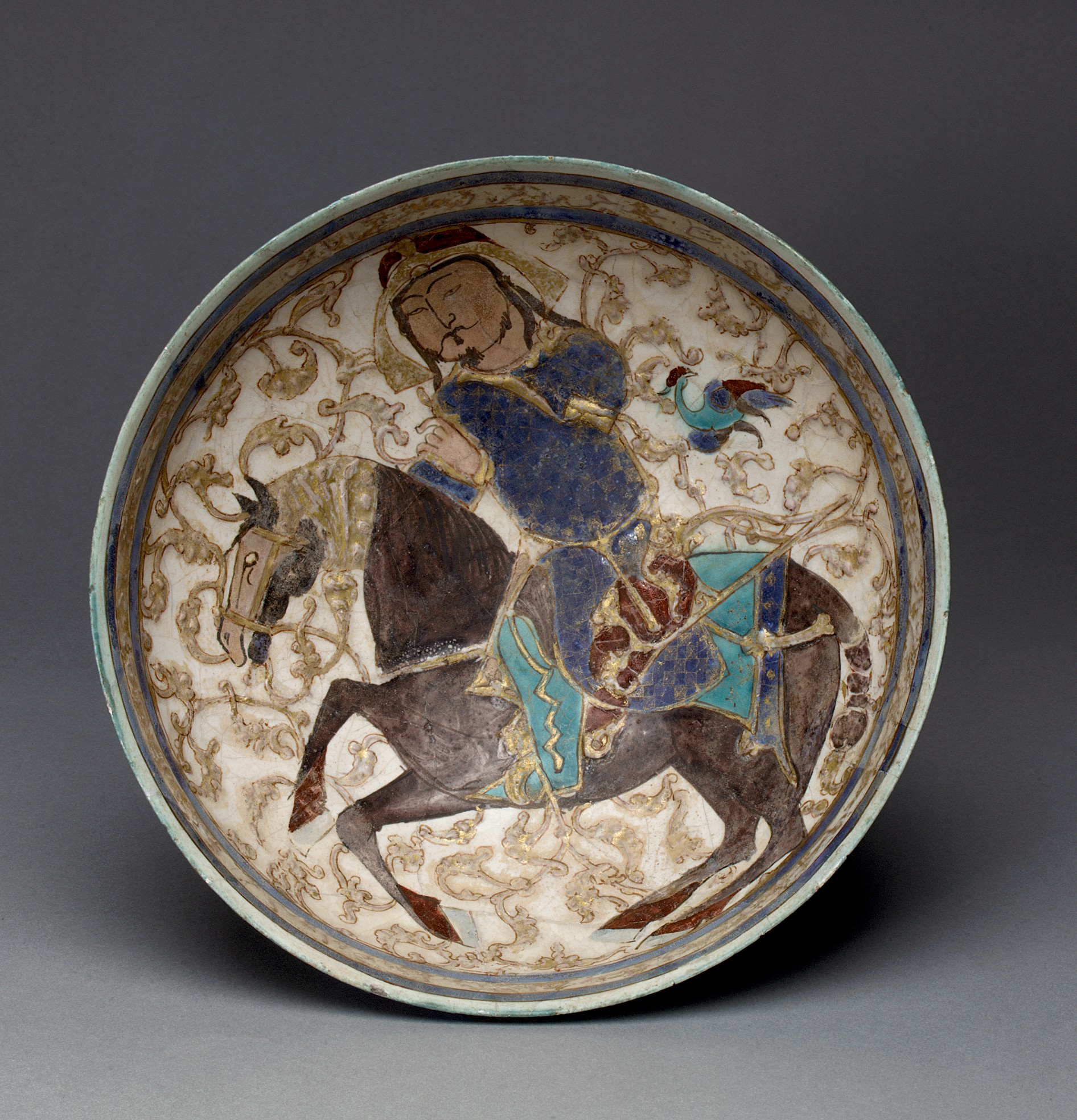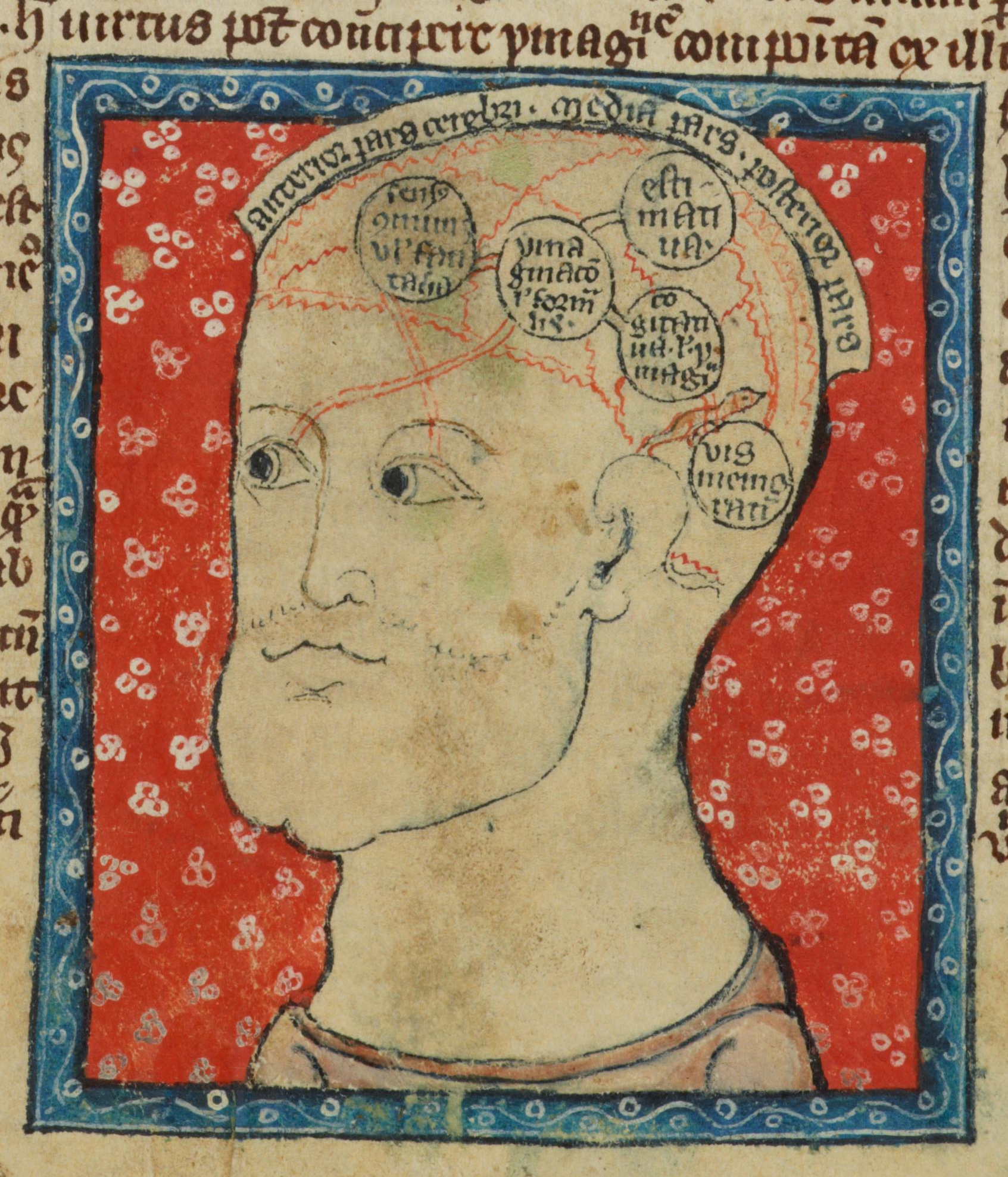
The Blemmyae was a mythical tribe of headless men said to dwell in the African desert. Here, a member of the tribe fights a winged grotesque in the margins of a manuscript in the British Library.

This bowl shows a Prince on horseback hunting with a falcon, and was probably made in thirteenth-century Iran. Care for the bodies of these delicate hunting birds was a real art in the Middle Ages, for which fashionable rulers would pay significant sums.

This diagram is from a Hebrew manuscript and offers a guide to phlebotomy, a careful process of letting blood used by medieval healers to balance the humours of the body.

In the Middle Ages, the brain was thought to consist of a series of interrelated cells responsible for sensory data, judgement and memory. Here, a thirteenth-century encyclopedia now in a library in Cambridge shows these cells are plotted as circles connected by a network of squiggly lines.

This tray, painted by the Italian artist Bartolomeo di Fruosino, depicts a noblewoman who has recently given birth. Such trays were gifts to pregnant women, designed to bring good luck and good health in the difficult process of premodern birth.

This tapestry, made in Flanders at the very end of the fifteenth century, depicts the sense of sight. It is one of a series of six that show a mysterious woman accompanied by a lion and a unicorn and which would have once insulated a grand room in a late medieval household.






The Blemmyae was a mythical tribe of headless men said to dwell in the African desert. Here, a member of the tribe fights a winged grotesque in the margins of a manuscript in the British Library.
This bowl shows a Prince on horseback hunting with a falcon, and was probably made in thirteenth-century Iran. Care for the bodies of these delicate hunting birds was a real art in the Middle Ages, for which fashionable rulers would pay significant sums.
This diagram is from a Hebrew manuscript and offers a guide to phlebotomy, a careful process of letting blood used by medieval healers to balance the humours of the body.
In the Middle Ages, the brain was thought to consist of a series of interrelated cells responsible for sensory data, judgement and memory. Here, a thirteenth-century encyclopedia now in a library in Cambridge shows these cells are plotted as circles connected by a network of squiggly lines.
This tray, painted by the Italian artist Bartolomeo di Fruosino, depicts a noblewoman who has recently given birth. Such trays were gifts to pregnant women, designed to bring good luck and good health in the difficult process of premodern birth.
This tapestry, made in Flanders at the very end of the fifteenth century, depicts the sense of sight. It is one of a series of six that show a mysterious woman accompanied by a lion and a unicorn and which would have once insulated a grand room in a late medieval household.